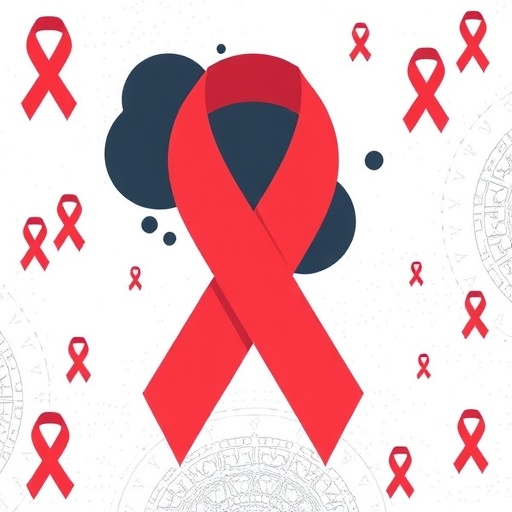In a compelling and timely economic evaluation published recently in JAMA Network Open, researchers have illuminated the profound implications that changes in health care policies could impose on the trajectory of HIV transmission within the United States. This comprehensive study employs advanced modeling techniques to estimate the potential impacts of even slight decreases in pre-exposure prophylaxis (PrEP) coverage—a critical preventive intervention in the fight against HIV. The results are striking: modest reductions in PrEP accessibility are projected to lead to thousands of avoidable new HIV infections, accompanied by a staggering escalation in net health care costs amounting to billions of dollars.
The study foregrounds the significance of PrEP as a cornerstone in contemporary HIV prevention strategies. By administering antiretroviral medications to at-risk HIV-negative individuals, PrEP has been shown to markedly reduce the likelihood of acquiring HIV infection. However, health care policy fluctuations threaten to undermine these gains. The researchers deployed a robust economic model integrating epidemiological data, healthcare usage statistics, and cost parameters with a focus on the United States population dynamics. Such an integrative approach affords a nuanced understanding of how changes in policy translate to individual and public health outcomes, as well as financial ramifications across the health system.
At the core of the analysis lies an extensive simulation of HIV transmission pathways, calibrated by varying levels of PrEP coverage. The team examined scenarios simulating incremental declines in coverage, charting the resulting infection rates and associated medical expenses over time. The findings reveal a non-linear relationship, where even relatively small contractions in PrEP uptake precipitate disproportionately large surges in new HIV cases. This signifies that the protective network created by widespread PrEP usage operates with fragile efficiency; any loosening in policy or access leads to exponential adverse effects.
The economic dimension assessed by the study extends beyond mere healthcare expenditures on antiretroviral drugs or treatment protocols. It encompasses broader direct and indirect costs, including hospitalizations, chronic care management, and productivity losses due to HIV-related morbidity. Through meticulous cost-benefit analysis, the authors illustrate that the financial burden engendered by reduced PrEP coverage far outweighs any short-term savings gained from policy austerity. This insight underpins the indispensable role of sustained investment in preventive interventions as a means to curtail the longitudinal economic drain posed by infectious diseases like HIV.
Beyond economic metrics, the study elucidates the epidemiological urgency of maintaining and expanding PrEP access in light of contemporary HIV transmission patterns. With the United States grappling with persistent disparities in access to healthcare—especially among marginalized and socioeconomically disadvantaged populations—the risk of exacerbated transmission looms large if preventive resources are curtailed. Targeted PrEP provision within these high-incidence groups represents a vital public health lever to mitigate ongoing epidemic trajectories.
Importantly, the model accounts for behavioral, demographic, and geographic heterogeneity within the population, allowing for a granular portrayal of the epidemic landscape. By incorporating data on adherence rates, risk behavior profiles, and regional disparity in healthcare access, the research realistically simulates the complexities encountered in real-world PrEP deployment. This approach ensures that the policy recommendations arising from the economic evaluation rest on empirically grounded projections rather than simplistic assumptions.
Furthermore, the authors highlight policy levers that could mitigate potential negative outcomes, including strategies to preserve or enhance PrEP coverage despite fiscal pressures. These include expanding insurance coverage, implementing community-based outreach, reducing stigma, and streamlining access pathways for underserved populations. Precisely because diminished PrEP coverage is linked to both adverse health outcomes and heightened economic costs, safeguarding and promoting this intervention embodies a high-value health policy imperative.
The findings also contribute to a broader discourse on the economics of infectious disease prevention. By demonstrating the potentially catastrophic consequences of undermining preventive care in viral epidemics, this study advocates for a paradigm shift towards proactive investment and continuous evaluation of health policies through an economic lens. Such integrated analyses afford policymakers empirical tools to balance budgetary constraints with public health goals effectively.
While PrEP stands as a pivotal tool, the study acknowledges the need to sustain a multifaceted approach to HIV prevention—including condom distribution, regular testing, treatment as prevention, and education initiatives. Nonetheless, this analysis unequivocally positions PrEP coverage as a linchpin whose destabilization threatens to erode decades of progress against HIV. This interplay between biomedical innovation and health economics underscores the complexity of translating scientific advances into sustainable public health gains.
Crucially, the corresponding author, Patrick S. Sullivan, DVM, PhD, emphasizes that health care policies that fail to accommodate the continued scale-up and equitable provision of PrEP risk reversing beneficial trends in HIV incidence. Thus, informed, evidence-based decision-making becomes paramount in safeguarding population health, health equity, and fiscal sustainability.
In summary, this economic evaluation sheds urgent light on the stakes at play in contemporary HIV prevention efforts. By rigorously quantifying the costs of reduced PrEP coverage—both human and financial—it galvanizes the case for health care policies that prioritize prevention as a strategic investment rather than a discretionary expense. The study serves as a clarion call to stakeholders across health care, policy, and community sectors to coalesce around preserving and expanding access to PrEP to ensure enduring progress against HIV.
Subject of Research:
Economic evaluation of health care policy impacts on HIV transmission and costs related to pre-exposure prophylaxis (PrEP) coverage in the United States.
Article Title:
Not explicitly provided in the source content.
News Publication Date:
Not specified in the source content.
Web References:
The original study is referenced with DOI: 10.1001/jamanetworkopen.2025.31341
References:
Not provided in the source content.
Image Credits:
Not provided in the source content.
Keywords:
Human immunodeficiency virus, Disease prevention, United States population, Health care costs, Preventive medicine, Infectious diseases, Economics




